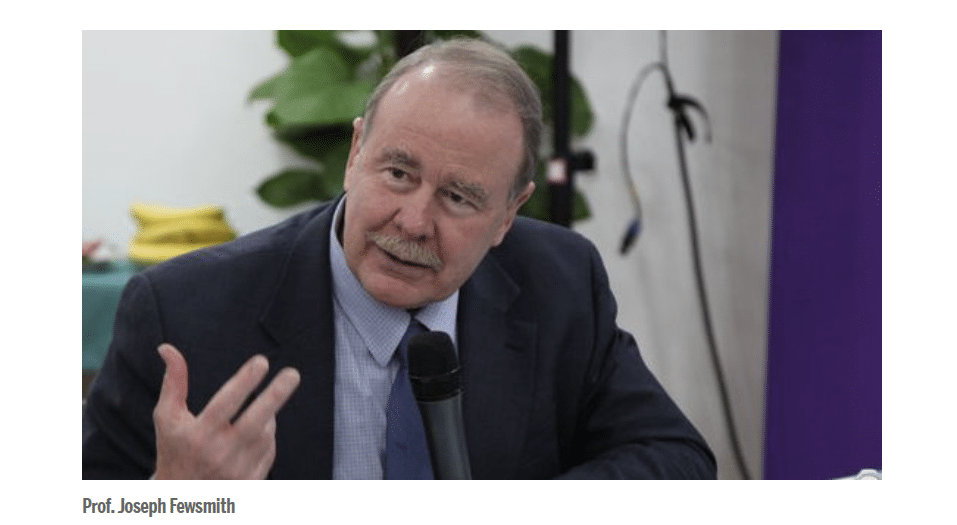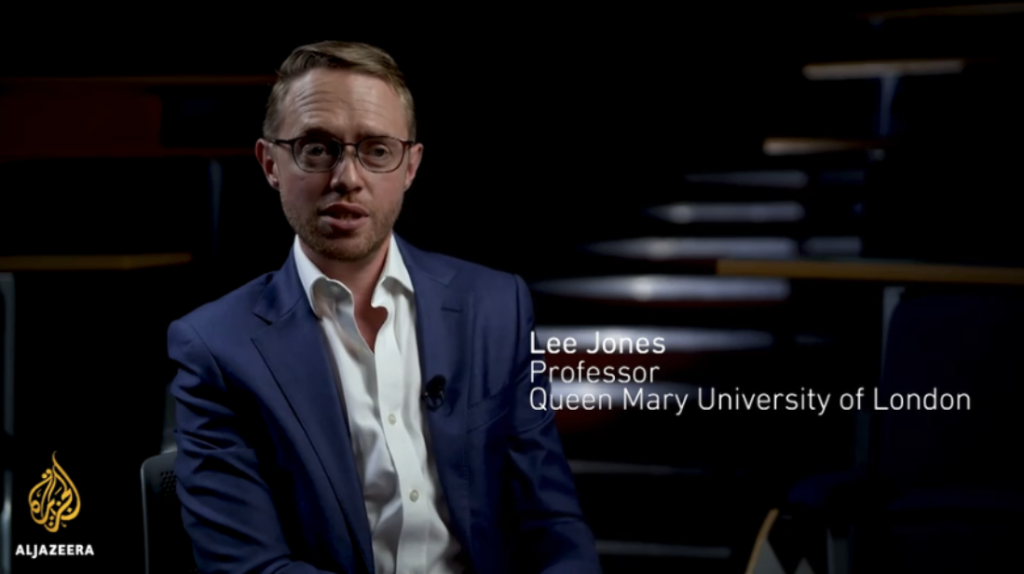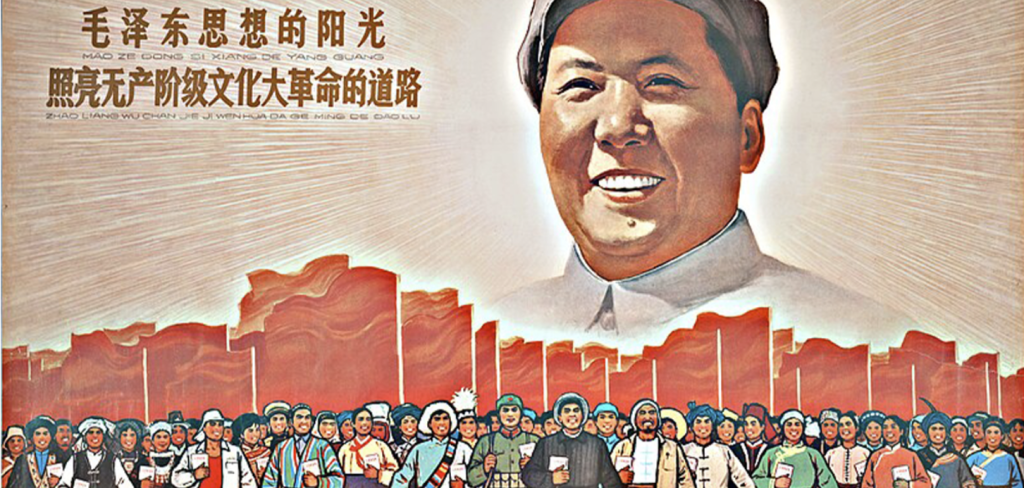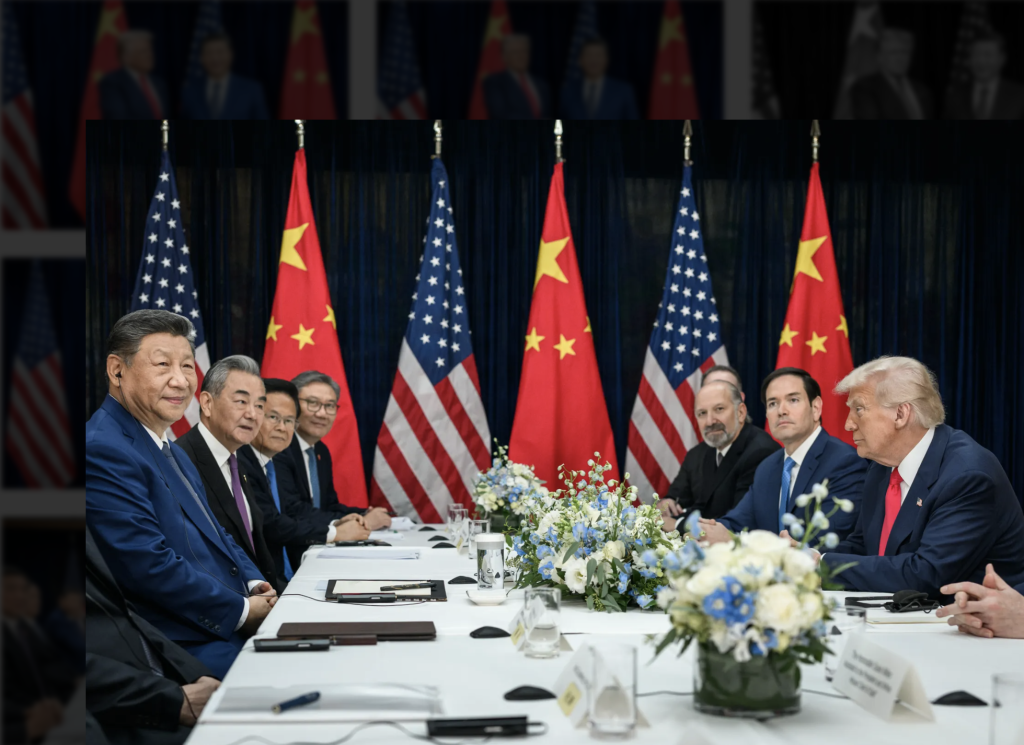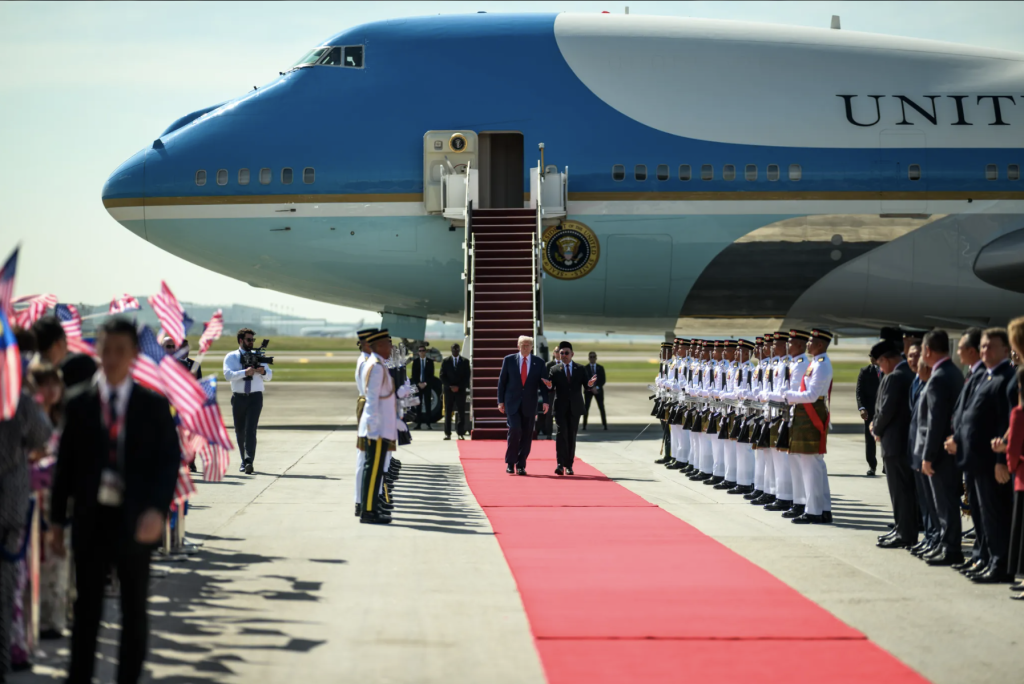How Capable Are the U.S. and Japan of Intervening in a Taiwan Conflict?
Translation: The Fentanyl Issue and Functional Cooperation between China and the United States
- Other (Do Not Use)
 Bikai Chen
Bikai Chen- 08/24/2023
- 0
The following is a translation of an article by Professor Zha Doajiong, professor of international political economy in the School of International Studies, Peking University. It was originally published in Chinese, a copy of which can be accessed here.
In recent years, “fentanyl” has gone from being an infrequent or even obscure word to becoming one of the unavoidable topics in China-United States relations. Essentially, the U.S. sides the proactive party, shifting from accusing China of being ineffective in international cooperation against narcotics to adopting measures such as lawsuits, arrests and sanctions against Chinese entities and individuals. At the level of public opinion, a growing number of American scholars concerned with bilateral political relations believe that smoother cooperation between China and the United States in the area of transnational movement of fentanyl would be conducive to lowering the hostility of the United States political community towards China.
In the age of emotionally charged social media, discussing bilateral relations and transnational topics based on factual descriptions is especially important for researchers in both countries. And understanding what fentanyl is might be a good place to start.
What is Fentanyl?
Fentanyl is a synthetic opioid originally developed as an analgesic for use in clinical surgery or pain relief. It is approximately 50 times more powerful than heroin and 100 times stronger than morphine.
Since its introduction in the late 1950s, drugs containing fentanyl have been authorized for sale in the United Kingdom in 1963, in the United States in 1968 and in China in 1974. In 2017, fentanyl was added to the World Health Organization’s fentanyl to its Model List of Essential Medicines, for adoption by member states.
Medicinal (legal) fentanyl is available in a full range of final dosage forms, including powders, tablets, injections, capsules, solutions, patches and nasal sprays. It is used on both adults and children and is particularly useful for controlling acute pain during surgical procedures in hospitals. Patients with advanced cancer can also be relieved by taking fentanyl, provided that medical advice is adhered to. Veterinary fentanyl, which is 10,000 times more powerful than morphine, cannot be used clinically in humans and can only be used on large animals.
Illicit (produced and sold) fentanyl is also a synthetic product. It comes in various forms, colorless and tasteless, and has effects similar to marijuana, heroin, or morphine. Illegal fentanyl can be added to other drugs to make them cheaper, more deceptive, and more likely to induce addiction. Mixing fentanyl with any drug (legal or illegal) increases the likelihood of fatalities from overdose inhalation. For example, carfentanil (an analog derived from fentanyl), which is 100 times more potent than fentanyl, can potentially cause respiratory depression and arrest, unconsciousness, coma, and death with as little as 0.02 milligrams (the equivalent of a few grains of salt).
In relation to making sense of complexities associated with the transnational flow of fentanyl, several concepts are critical.
One is a fentanyl derivative. Fentanyl is a compound with a specific chemical structure, and changes in its potency can be achieved by modifying one or more regions of the chemical structure. Theoretically, a new, potentially more potent and toxic compound could be formed by a minor change in chemical structure, and there is no end to the number of new compounds that could be created by such changes.
The second is fentanyl analogs. Particularly in illicit circulation, there are a wide range of fentanyl analogs that are similar to fentanyl in chemical structure but not easily detectable. For first responders such as officers in customs control and drug market surveillance, this is a formidable challenge. It is virtually impossible to determine whether a certain article declared as a drug contains fentanyl without the use of fentanyl test strips or reagents. Indeed, test strips or reagents may also fail to detect rapidly refurbished fentanyl-based drugs.
Third, fentanyl precursors. This concept refers primarily to the compounds used to synthesize fentanyl. Since fentanyl and its analogs can be synthesized by a variety of methods, candidate chemical materials are numerous and impossible to predict. On the one hand, these materials are required for medical, industrial or commercial purposes and are legal. On the other hand, preventive interventions against the abuse of fentanyl, as well as the fight against its illicit manufacture and trafficking, have been the subject of international cooperation efforts since fentanyl’s introduction.
Within the framework of the United Nations, the Single Convention on Narcotic Drugs (1961) and the Convention against Illicit Traffic in Narcotic Drugs and Psychotropic Substances (1988) form the core legal mechanisms for placing fentanyl precursors and their derivatives on control lists to which member states are all obliged to adhere. Inclusion of a fentanyl precursor for international control involves begins with discovery, to reporting and professional assessment. By 2016, sixteen fentanyl precursors are on the control list, with two more added in 2017 and three more in 2022.
In short, “fentanyl” is a term with diverse and complex connotations based on material and situational references. When used legally, fentanyl is a narcotic and psychotropic drug. In the context of effectively regulated use, it is an “angel” to the patient for whom it is intended. However, when used inappropriately or illegally, especially in the narcotics market, fentanyl is the “devil”. There is a legitimate national demand for fentanyl in the form of pharmaceuticals, derivatives and precursors, but beyond these legitimate needs, fentanyl is an enemy of humanity for which there are well-established international mechanisms seeking to effectively regulate and interdict its distribution.
Fentanyl and Functional Cooperation between China and the United States.
Counter-narcotics cooperation is one of the areas of functional cooperation between China and the United States. In the international relations literature, “functional cooperation” refers to cooperation between governments on social and transnational issues of mutual concern. Given the fact that the issues in question transcend political connotations, the two sides tend to downplay diplomatic differences in the course of their interactions in order to reach consensus.
China and the United States began bilateral counter-narcotics cooperation in 1985. The China-U.S. Memorandum of Understanding on Counter-Narcotics Cooperation, signed two years later, provides a framework for establishing and maintaining functional cooperation, with the participation of the two countries’ operational departments of public health, justice, and customs. In 2003, the two sides established the mechanism of the counter-narcotics cooperation intelligence exchange meeting. Judging from the fact that the 9th intelligence exchange meeting was held as scheduled in 2018, the functioning of the mechanism was not adversely affected by the shift in U.S. policy toward China toward a competitive and confrontational posture.
For many years, control and cooperation on fentanyl has been one of the topics explored by functional agencies of the Chinese and American governments. Against the backdrop of dramatic changes in the political and diplomatic dynamics of the two countries, in September 2019, the U.S. White House Office of National Drug Control Policy Director visited Beijing and exchanged in-depth views with the Chinese side on narcotics traceability and analysis technology, prevention of narcotics-related crimes in the logistics sector, as well as control and management of fentanyl-type substances, etc. The two countries have further strengthened their cooperation in the area of intelligence exchanges and data sharing.
The cooperation between China and the United States in fighting against narcotics trade also includes strengthening joint law enforcement with a common commitment to combating illegal fentanyl-type substances. In November 2019, a China uncovered a fentanyl smuggling case, with the Bureau of Drug Control of China’s Ministry of Public Security and the Immigration and Customs Enforcement of the U.S. Department of Homeland Security sharing intelligence and exchanging evidentiary materials. The operation destroyed a criminal gang that illegally processed, trafficked, and smuggled fentanyl and other drugs.
In China, legally produced fentanyl-type drugs are well regulated, and fentanyl-type substance abuse is not a known problem in the society. Nevertheless, the Ministry of Public Security, the National Health Commission and the National Medical Products Administration still issued an announcement in April 2019 to include fentanyl-type substances in the supplementary list of controlled varieties of narcotic drugs and psychotropic drugs in the non-pharmaceutical category. This means that all fentanyl-type substances that may appear thereafter are considered non-pharmacological narcotic drugs and psychotropic drugs in China and are subject to strict control, including production and legal export. This is the first of its kind among the state members of the United Nations Commission on Narcotic Drugs.
In the United States, the abuse and illicit use of fentanyl has caused a major public health crisis. According to the United States Centers for Disease Control and Prevention, 80,000 Americans died in 2021 due to drug abuse, primarily of fentanyl. The U.S. Drug Enforcement Administration and other agencies consider China to be a major supplier of fentanyl to the U.S. narcotics market. Fentanyl-type substances from China, as well as tablet presses and other machinery needed to produce fentanyl, either enter the United States directly or through Mexico.
During the Biden administration, the U.S. side has escalated its unilateral judicial actions against Chinese entities and individuals. For example, in May 2020, the U.S. Department of Commerce added the Institute of Forensic Science of the Ministry of Public Security and the National Narcotics Laboratory of China to the list of export control entities. These two entities, however, are key institutions in China’s fight against the illicit flow of fentanyl and are responsible for identifying and monitoring fentanyl and its analogues and providing data to the United Nations.
In June 2023, China’s National Medical Products Administration and the U.S. Food and Drug Administration resumed contact to exchange information on 2023 and future cooperation. The fight against narcotics is part of the work of the pharmacological supervision. In other words, the cooperation between China and the U.S. in the fight against narcotics began to return to the track of functional cooperation.
Suggestions for Chinese Policy
“Fentanyl”, whatever its specific reference, is just one of the substances that have been prominently addressed by the United States in the fight against its opioid abuse. Lessons from the U.S. government’s “war on drugs,” which began as early as 1971, suggest that the United States needs to take a more holistic approach to managing the public health crisis caused by its drug misuse, rather than relying solely on control of foreign sources of supply. However, despite the controversy over policy design and policy measures, the war has been, and will continue to be, fundamental to the governance of public health within the United States and to the spillover of the politics of governance into the diplomatic arena.
Faced with the situation that the overall posture of the U.S. policy towards China will not change in the short term, how should we respond to the issue of transnational circulation of fentanyl in favor of the interests of the Chinese side?
First of all, there is no need for China to characterize statements such as “China is the world’s main source of fentanyl” as malicious. This is because, as a substance and product, fentanyl, including its precursors and derivatives, is in demand for legitimate use throughout the world. As for the fentanyl analogs that have emerged as a result of illicit production, the problem lies in public health governance, such as medicines regulation. The spheres of competence of public health governance at the international level are delimited on a country-by-country basis. These are common sense.
Secondly, although it is true that the United States, in its response to the fentanyl crisis, has blamed other countries instead of looking for its own causes, this should not change the basic value orientation of the Chinese side, which has insisted on continuing exchanges with the United States, guided by the principle of functional cooperation, and has sought to find the greatest possible common ground in that cooperation. Moreover, the occurrence of abuse of any drug in any society is a foretaste of another society. What Chinese professionals, research institutes, public health and judicial authorities have gained from exchanges with the United States is useful knowledge and warnings that will be useful in preventing the emergence of a large-scale drug abuse crisis in China.
Thirdly, the transnational movement of illicit drugs is a persistent phenomenon in the history of mankind and a topic that drug control and justice sectors in all countries have to deal with routinely. It is common for the drug control and justice sectors of any government to be faced with the challenge of not being able to keep up with changes. Particularly in the case of the “dark web” and other Internet channels that are often used by lawbreakers and criminals, exchanges with other countries, such as the United States, and multilateral mechanisms, such as the United Nations, can be beneficial to China in combating the lawlessness that inevitably exists in its own society.
Fourthly, the linking of the “fentanyl crisis” to “China” by United States politicians has its own dynamics and logic and is part of the domestic political ecology of the United States. China cannot underestimate the incendiary power of such rhetoric within the United States and even in the wider international community. Whether or not the U.S. changes or withdraws sanctions against relevant Chinese entities may not be closely related or even irrelevant to China’s actual actions in the future. Even so, there is still value and necessity in maintaining the functional cooperative nature of mechanisms such as the China-U.S. counter-narcotics cooperation intelligence exchange meeting.
In conclusion, it is not important whether China’s adherence to professional and functional cooperation with all countries, including the United States, as well as international organizations in the counter-narcotics cause, such as counter-fentanyl, will reduce the hostility of the United States political class towards China, as some American scholars have predicted. What is important is that, through international counter-narcotics exchanges and cooperation, we can maintain the moral high ground in today’s and tomorrow’s world and, at the same time, create more favorable conditions for China’s own cooperation with other countries in the area of narcotics circulation (including on occasions when narcotics flow into China). It is only in this way that we can be “reasonable, advantageous and prudent” in China-United States counter-narcotics cooperation.


